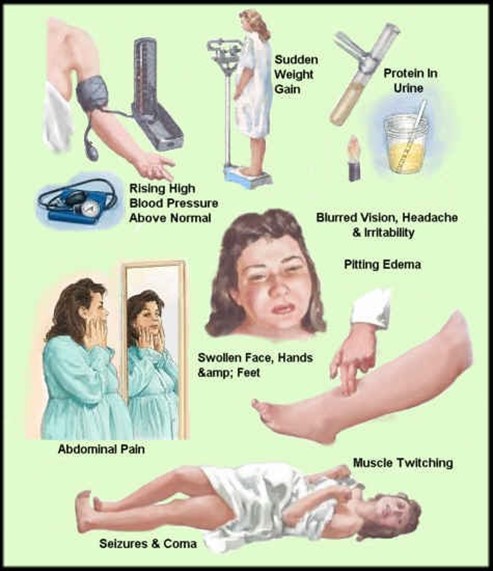A nurse is caring for a client who is immobile.
Which of the following interventions is appropriate to prevent contracture?
Align a trochanter wedge between the client’s legs.
Apply an orthotic to the client’s foot.
Place a towel roll under the client’s neck.
Position a pillow under the client’s knees.
undefined
The Correct Answer is B
The correct answer is choice B. Applying an orthotic to the client’s foot.
An orthotic is a device that supports or corrects the function of a body part.
In this case, an orthotic can help prevent foot drop, which is a common contracture deformity in immobile patients.
Foot drop occurs when the muscles that lift the foot become weak or paralyzed, causing the foot to hang down at the ankle. An orthotic can keep the foot in a neutral position and prevent shortening of the calf muscles and Achilles tendon.
Choice A is wrong because a trochanter wedge is used to prevent external rotation of the hip, not contracture. A trochanter wedge is a triangular-shaped pillow that is placed between the legs to keep them parallel and aligned.
Choice C is wrong because a towel roll under the neck is used to maintain proper cervical alignment, not contracture. A towel roll can prevent hyperextension of the neck and support the natural curve of the spine.
Choice D is wrong because a pillow under the knees can actually cause contracture of the knee joint by keeping it in a flexed position. A pillow under the knees can also reduce blood flow to the lower extremities and increase the risk of deep vein thrombosis.
Contracture is a permanent tightening of the muscles, tendons, skin, and surrounding tissues that causes the joints to shorten and stiffen.
Contracture can limit the range of motion and function of the affected body part. Contracture can be caused by inactivity, scarring, or diseases that affect the muscles or nerves. Prevention of contractures requires early diagnosis and initiation of physical medicine approaches such as passive range of motion exercises and splinting before contractures are present or while contractures are mild.
Nursing Test Bank
Naxlex Comprehensive Predictor Exams
Related Questions
Correct Answer is C
Explanation
This is a sign of preeclampsia, a serious complication of pregnancy that can cause high blood pressure, proteinuria, and seizures.

Preeclampsia can affect the placenta, the kidneys, the liver, and the brain of the mother and the fetus. It requires immediate medical attention and may lead to early delivery.
Choice A, bleeding gums, is wrong because it is a common occurrence during pregnancy due to hormonal changes that increase blood flow to the gums. It is not a cause for concern unless it is excessive or accompanied by other symptoms.
Choice B, urinary frequency, is wrong because it is also a normal finding during pregnancy due to the growing uterus putting pressure on the bladder. It is not a sign of infection or kidney problems unless it is associated with pain, burning, or blood in the urine.
Choice D, faintness upon rising, is wrong because it is usually caused by orthostatic hypotension, a drop in blood pressure when changing positions.
This can happen during pregnancy due to the dilation of blood vessels and the increased blood volume. It can be prevented by rising slowly, drinking enough fluids, and avoiding prolonged standing.
Correct Answer is A
Explanation
The correct answer is choice A. “The more my baby is at the breast sucking, the more milk I will produce.” This statement indicates an understanding of the teaching because it reflects the principle of supply and demand in breastfeeding. The more the baby stimulates the breast, the more milk the mother will produce.
Choice B is wrong because manually expressing milk will not decrease the milk supply. In fact, it can help increase the milk supply by removing more milk from the breast and signaling the body to make more.
Choice C is wrong because the breast is not emptied after 5 to 10 minutes of feeding. The baby should be allowed to nurse until they are satisfied and show signs of fullness, such as releasing the nipple, falling asleep, or turning away from the breast. The average duration of a feeding session can vary from 10 to 45 minutes.
Choice D is wrong because the baby should not always start on the same breast when feeding. The mother should alternate which breast she offers first to ensure both breasts are stimulated and drained equally.
This can help prevent engorgement, mastitis, and low milk supply. A simple way to remember which breast to start with is to wear a bracelet or a clip on the bra strap on the side that needs to be offered next.
Whether you are a student looking to ace your exams or a practicing nurse seeking to enhance your expertise , our nursing education contents will empower you with the confidence and competence to make a difference in the lives of patients and become a respected leader in the healthcare field.
Visit Naxlex, invest in your future and unlock endless possibilities with our unparalleled nursing education contents today
Report Wrong Answer on the Current Question
Do you disagree with the answer? If yes, what is your expected answer? Explain.
Kindly be descriptive with the issue you are facing.
